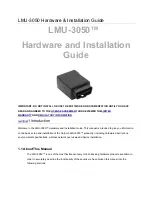
Step 1
Step 2
Step 1
Operator Manual
Raytheon Marine GmbH
Germany
R
NSC 18
RADAR
2
−
27
3748DOC020102
Edition: 14.JAN.2005
2.3.1.3
GAIN
The GAIN control adjusts the sensitivity of the radar video. If properly adjusted,
the GAIN control results in noise appearing as a light speckle at the dim level.
This light speckle setting results in maximum detectability of targets against
background noise. If GAIN is set too low, weak or distant targets could be
missed. Excessive gain increases background noise and could make target
detection more difficult. A gain slider is provided to indicate the GAIN control
setting.
Once the GAIN control has been set, it will automatically maintain the same
setting for all ranges. It is not necessary to readjust whenever a new range scale
is selected. However, it should be adjusted to optimize the radar video as clutter
(sea and/or rain) conditions change.
The gain control function is active over its entire rotation range.
2.3.1.4
SEA
Step 1
Select MANual mode
Step 2
The Sea control is used to suppress radar returns which are the result of radar
signals reflected from waves. This effect is commonly known as sea clutter.
The effects of sea clutter are greater (more reflected energy) at close range and
vary with wave height and wind.
It should also be noted that sea clutter is reduced on the leeward side of the ship
as the retreating wave fronts do not provide as many radar returns as oncoming
waves.
Small targets (buoys etc.) often return nearly the same energy as do the waves
and can therefore be lost in the clutter. However, since sea clutter is random in
nature, the gain and clutter processing circuitry together with the SEA control
allow the operator to reduce the sea returns to a light background speckle at low
brightness level while maintaining targets in the sea clutter at full brightness.
Summary of Contents for NSC 18
Page 1: ...3464 100 037 NSC 18 Navigational Radar System User Manual 3748DOC020102 Edition 14 JAN 2005...
Page 3: ......
Page 4: ......
Page 5: ......
















































